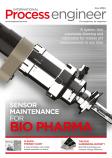In a German Federal Ministry of Education & Research (BMBF) joint project, Osram, Götting, KEB Automation and Fraunhofer IEM have researched the possibilities of light-based positioning, particularly for use in industrial applications. At the end of the project, the team came to a promising conclusion: navigating by light is practical, flexible and reliable – and promises great potential for Industry 4.0.
The results of the three year collaborative research project is a positioning system that navigates driverless transport vehicles by light through a logistics or production hall. Positioning takes place using LED lights mounted on the hall ceiling, each of which emits a clear identifier via modulated (i.e. specific pulsating) light. This modulation is completely invisible to the human eye, so no changes are necessary to the existing lighting situation.
Explaining the advantages of the solution, Christian Fechtelpeter, scientist at Fraunhofer IEM, commented: “Easy and flexible navigation for autonomous vehicles is possible using light-based positioning. If, in the future, we link these to the existing LED ceiling lighting, the technology could be a key driver for Industry 4.0.”
For illustrative purposes, navigation was implemented in the modular transport system KATE (Kleine autonome Transporteinheit, a small autonomous transport unit) from Götting. While the standard version of the vehicle is controlled using optical guidelines and transponders installed on the floor, track guidance can now be achieved using the new system. Osram modified standard industrial LED lights and developed a camera-based sensor system to receive the modulated light. An in-vehicle evaluation unit developed by Götting processes the camera and other sensor data to facilitate navigation via a user interface. The inter-disciplinary development of the complete system was coordinated by Fraunhofer IEM using various methods of system engineering. The primary factors for success were the model-based specification of the overall architecture, as well as the test case planning.
As an application partner, KEB used its own electronic production processes to illustrate – and therefore validate – the application in use under real conditions. This shows that light-based positioning offers advantages over other navigation technologies when it is ready for market. Companies can easily use their existing lighting infrastructure. Since obstacles on the production floor do not interrupt communication between sender and receiver, navigation is largely trouble-free. The route taken by driverless transport systems can be flexibly reprogrammed, which allows processes to be streamlined and workflows smoothed.


















